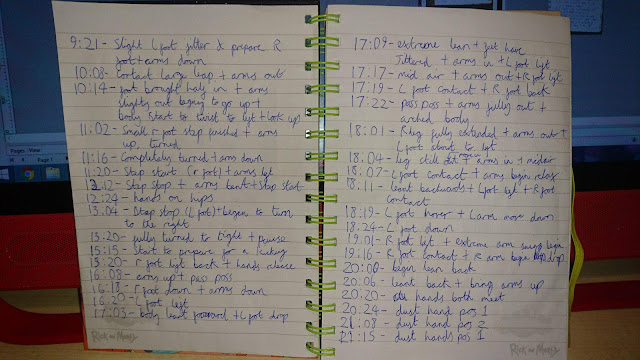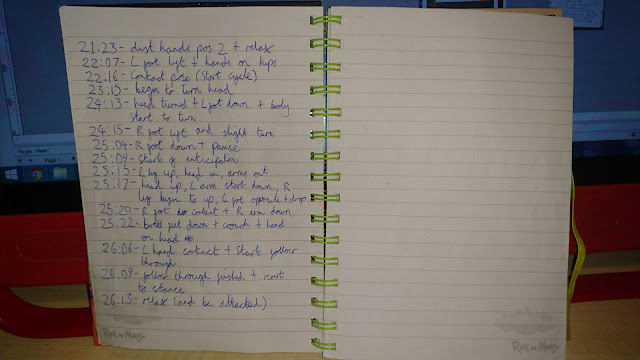Performance and Character - Weeks 11-14
Short Story
This task, I felt was my chance to create something entirely unique and formed entirely from my imagination, as we were given literally no guidelines other than it had to be no less than 35 seconds. There were several qualities I wanted to ensure that this story and therefore animation met, these being;
After countless attempts of trying to figure out what story to go for, I came across a Simpsons episode with an exceptionally funny moment of slapstick, which on its own wouldn't make for a short story, but I thought that I could build a story around this short moment where Homer kicks a turtle (it's funnier than it sounds).
The way in which I came up to incorporate this, was to have my character 'Blake', late for a work meeting, in the panic of which her runs into a dog who persistently keeps on getting in his way, delaying his arrival further. After several jittery attempts to get past the dog, with the dog successfully blocking his path, Blake looses his cool and boots the dog into the far distance. Filled with immediate regret of spontaneity, Blake attempts to continue his path nonchalantly, hoping nobody witnessed his horrific act.
Below is the reference material that I shot for the story as it stood at this point-
I was fine with this story when it was first developed, as it followed Tzvetan Todorov's narrative theory perfectly, but after a talk with Johny, I decided to add on another beat to the story which would make for a much better ending. Johny suggested that in stories, people who often mistreat animals should have some form of comeuppance. In response to this advice, I though it would be good to add even more of a hint of arrogance to this character by making him walk away smugly after kicking the dog, only to be terrified moments later after seeing a gang of dogs group behind him, proceeding to attack him. This way, the character that I am animating becomes the antagonist, as the equilibrium is restored when dogs (who are the protagonists) get their revenge on him, and due to his attitude, it would be somewhat deserved.
Unfortunately, this meant having to re-shoot the reference material for this animation. Not only did I change the ending in the way that I explained above, but I also attempted to make me reactions more genuine, by having my sister act as the dog, meaning that I no longer have to pretend something's in the way.
It was also essential to make up a storyboard for this animation. This mainly helped me through giving a visual idea of how the assets will be distributed, and helped give me a better idea of how to put more of a cartoonish flair and appeal to each key frame, instead of solely working from the reference material.
- I wanted the story to allow all of my learning to be applied into this one, large final piece, that includes; walk cycles with different emotional states, momentum, gravity and weight (wall climb), and expressive gestures and poses (dialogue performance).
- I wanted the story to follow some form of well known narrative structure, such as Tzvetan Todorov's narrative theory regarding equilibrium. This should make for the short story to have a satisfying have payoff and engaging build up.
- I wanted to have the story have an element of cartoon slapstick, as that is the type of animation that I would love to go into in the future.
After countless attempts of trying to figure out what story to go for, I came across a Simpsons episode with an exceptionally funny moment of slapstick, which on its own wouldn't make for a short story, but I thought that I could build a story around this short moment where Homer kicks a turtle (it's funnier than it sounds).
The way in which I came up to incorporate this, was to have my character 'Blake', late for a work meeting, in the panic of which her runs into a dog who persistently keeps on getting in his way, delaying his arrival further. After several jittery attempts to get past the dog, with the dog successfully blocking his path, Blake looses his cool and boots the dog into the far distance. Filled with immediate regret of spontaneity, Blake attempts to continue his path nonchalantly, hoping nobody witnessed his horrific act.
Below is the reference material that I shot for the story as it stood at this point-
I was fine with this story when it was first developed, as it followed Tzvetan Todorov's narrative theory perfectly, but after a talk with Johny, I decided to add on another beat to the story which would make for a much better ending. Johny suggested that in stories, people who often mistreat animals should have some form of comeuppance. In response to this advice, I though it would be good to add even more of a hint of arrogance to this character by making him walk away smugly after kicking the dog, only to be terrified moments later after seeing a gang of dogs group behind him, proceeding to attack him. This way, the character that I am animating becomes the antagonist, as the equilibrium is restored when dogs (who are the protagonists) get their revenge on him, and due to his attitude, it would be somewhat deserved.
Unfortunately, this meant having to re-shoot the reference material for this animation. Not only did I change the ending in the way that I explained above, but I also attempted to make me reactions more genuine, by having my sister act as the dog, meaning that I no longer have to pretend something's in the way.
As I will be using the same process of animation as I did for the previous animation (asides from the two walk cycles included in the animation), I decided to continue with the pre-production techniques I established in that process. The sheets of which are shown below.
 |
| Pages 1 & 2 of animation sheets |
 |
| Pages 3 & 4 of animation sheets |
 |
| Page 5 of animation sheets |
It was also essential to make up a storyboard for this animation. This mainly helped me through giving a visual idea of how the assets will be distributed, and helped give me a better idea of how to put more of a cartoonish flair and appeal to each key frame, instead of solely working from the reference material.
 |
| Page one of storyboards |
 |
| Page two of storyboards |
Below, you can see how the animation looked after I placed every keyframe listed in the animation sheets above. Not much else was done to the animation at this point (asides from the walk cycles). This is a common animation practice and it's known as 'blocking'. After this stage is complete, I add in all the in between frames and make tweaks to the animation.
Below is the final animation
What went well -
- I have improved upon every aspect of what I wasn't happy about in my previous animation, as I have created my own story, and had a lot more kinetic energy in the character. Both of which I feel I achieved to solid degree.
- The kick is definitely my favourite part as it had a really good sense of weight and timing.
- I made it so my story involved the character going through many emotional states, two of which a full walk cycle was fleshed out for. These emotions include; panic, confusion, anger, smugness and fear, all of which I communicated through signature key poses and movements.
What could have gone better -
- I think from an outsiders view, the story may not be as clear as I intended, due to the fact that the dogs in the story were represented by cubes. this was due to my lack of knowledge on quadruped walk cycles and movements.
- One of my main anticipations for this piece was that I would be able to utilise multiple camera shots, however I felt it was more essential to show every aspect of the characters performance, but I still feel that certain camera angles would have helped to convey the story in a more dynamic way.
- Unfortunately the piece didn't reach the 35 second demand that was set in the brief, meaning that I had to extend certain holds out for longer, which I feel negatively affected the pacing and made certain segments too slow.
What I will change next time -
- I will make sure to diversify my range of knowledge of how different creatures move, therefore allowing me to represent other creatures through more recognisable figures.
- For my next animation similar to this, I will experiment with how different camera angles assist in communicating the story with not only the performance, but in direction.
- Before going into the production phase, I will ensure that my reference material is or has the ability to be stretched to the brief demands.
No comments:
Post a Comment